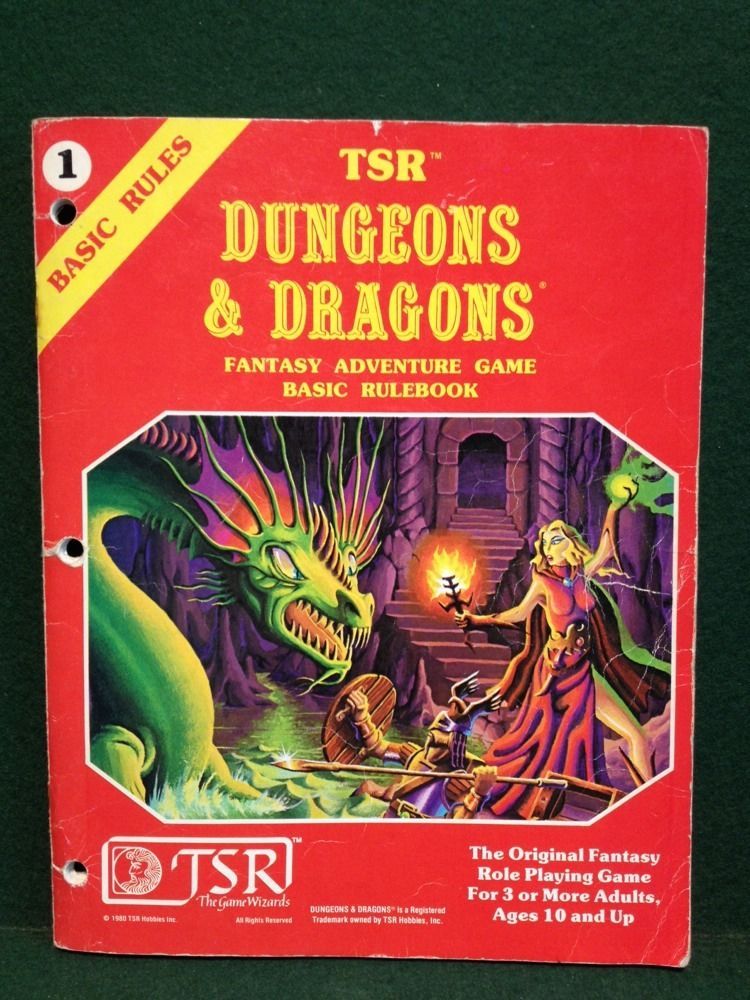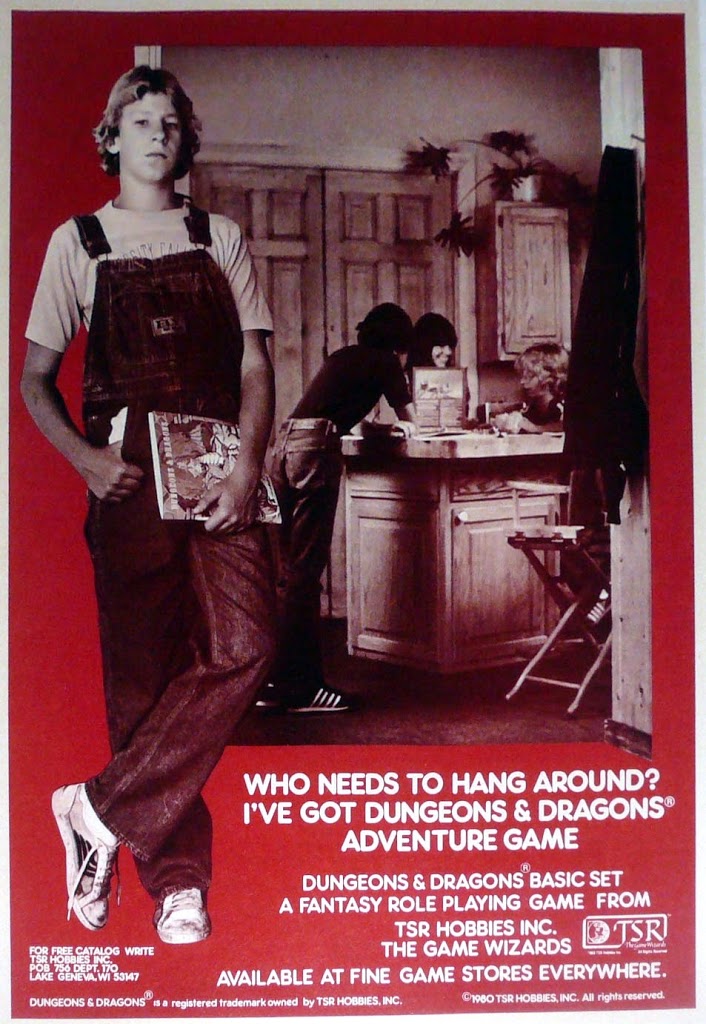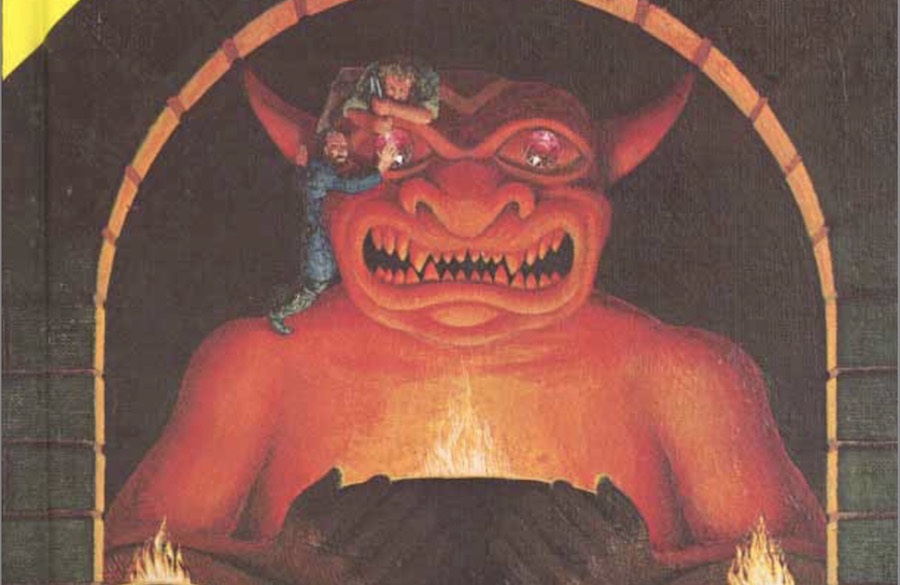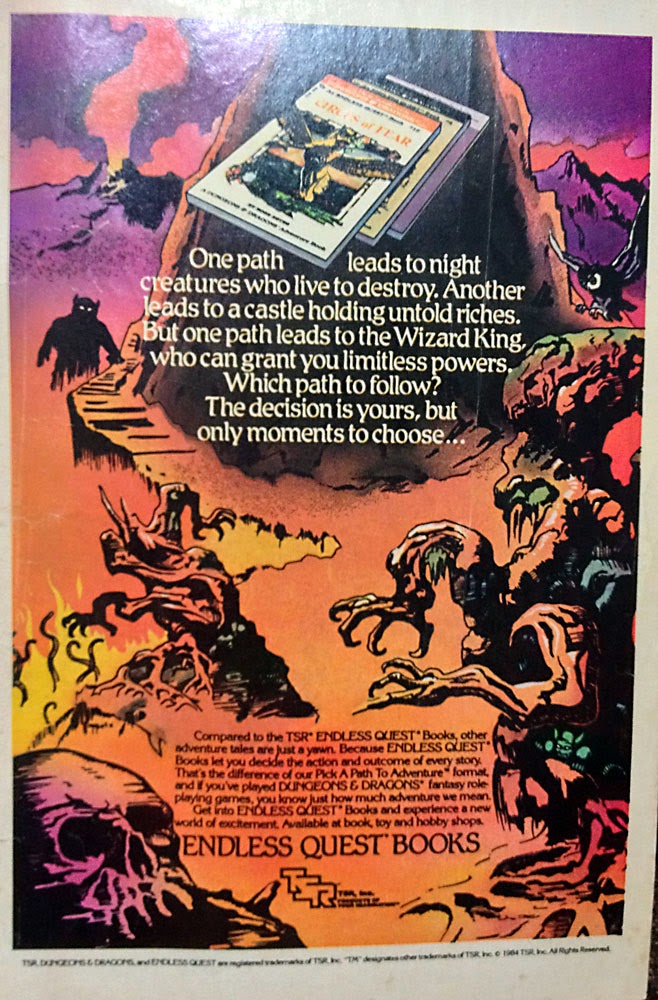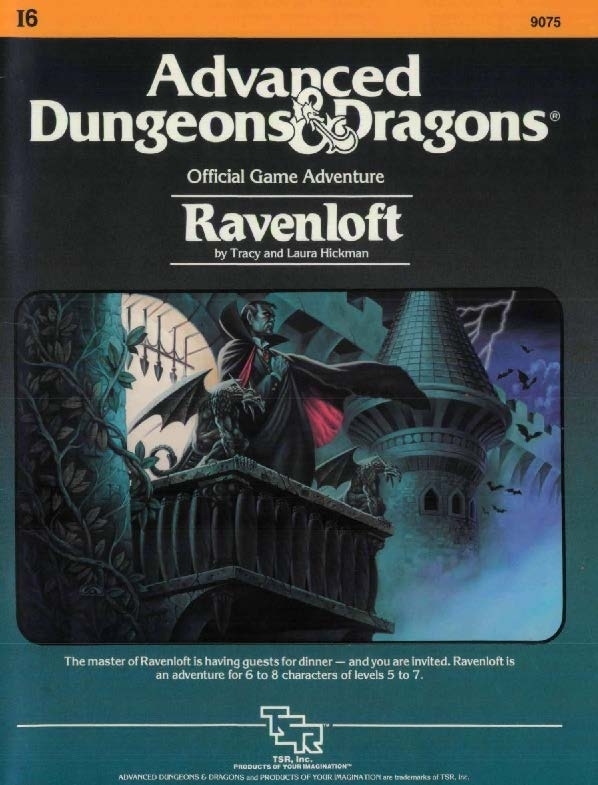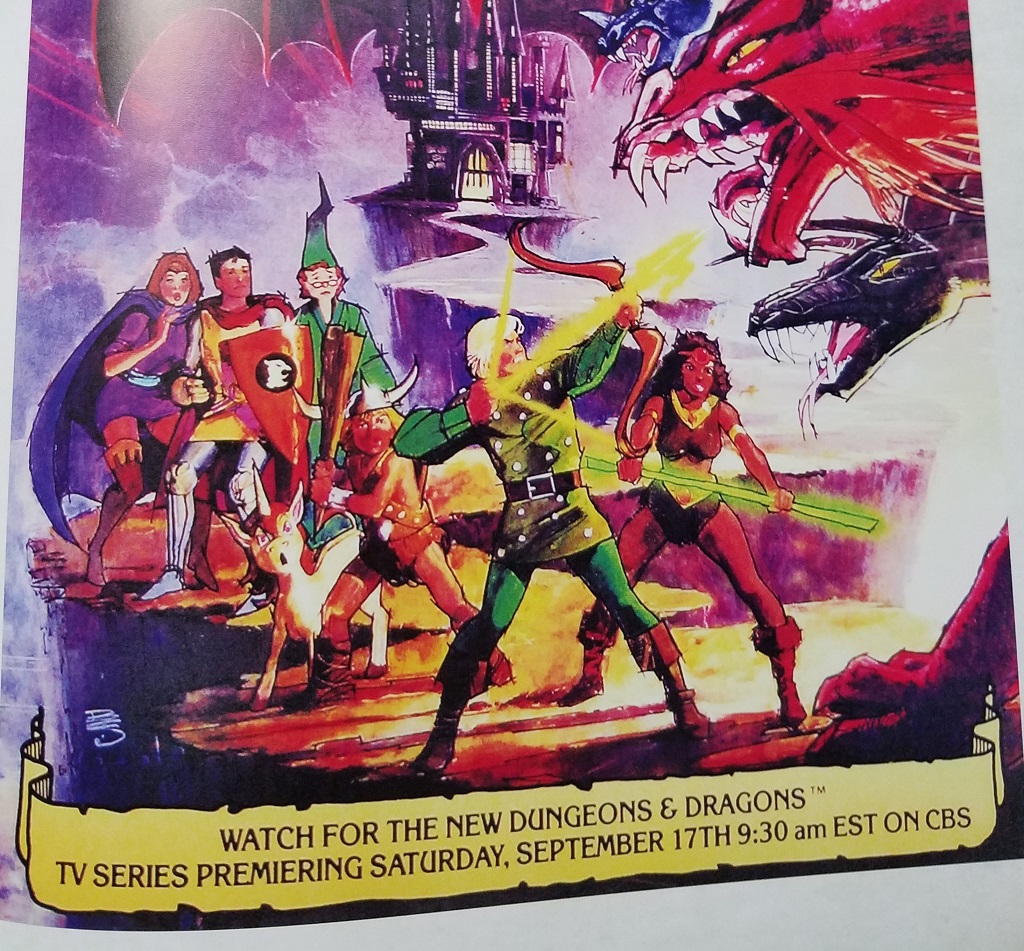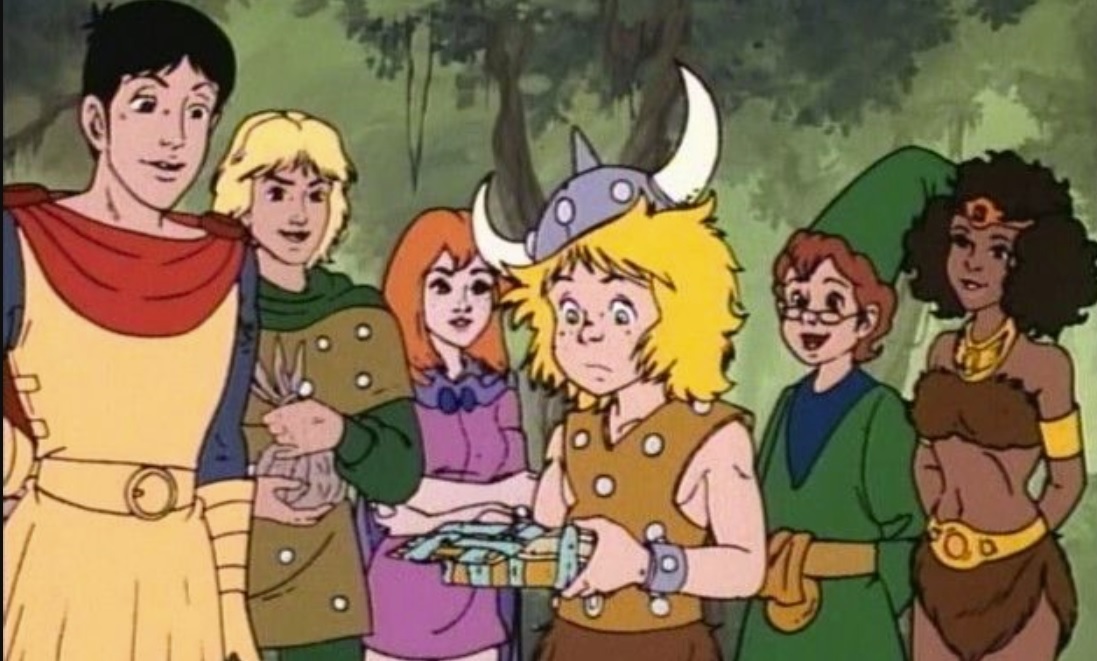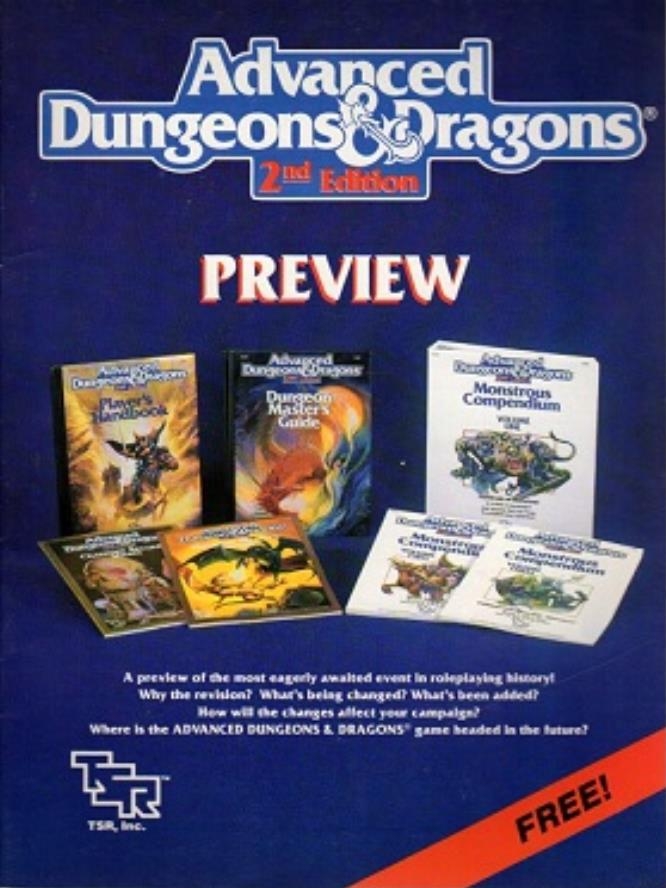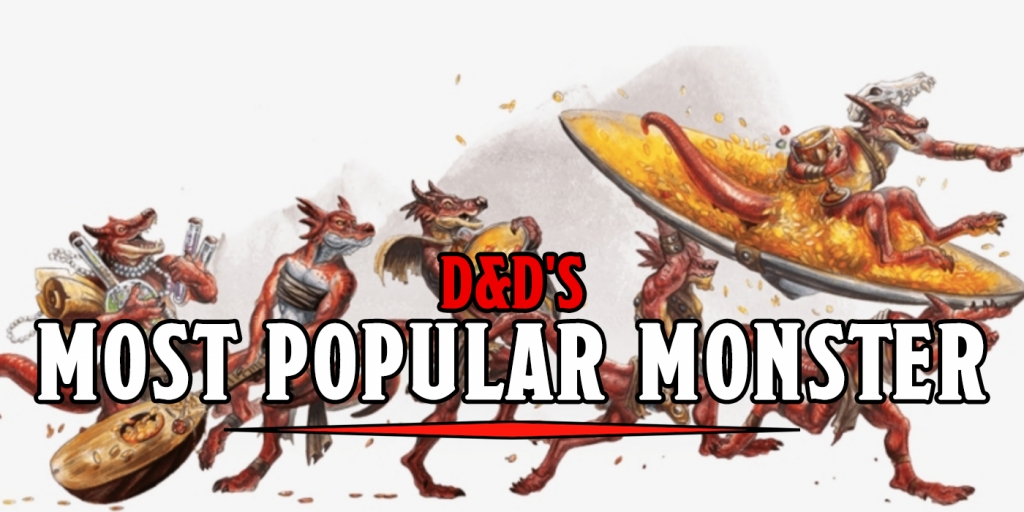D&D: The Fall Of Gygax – Prime
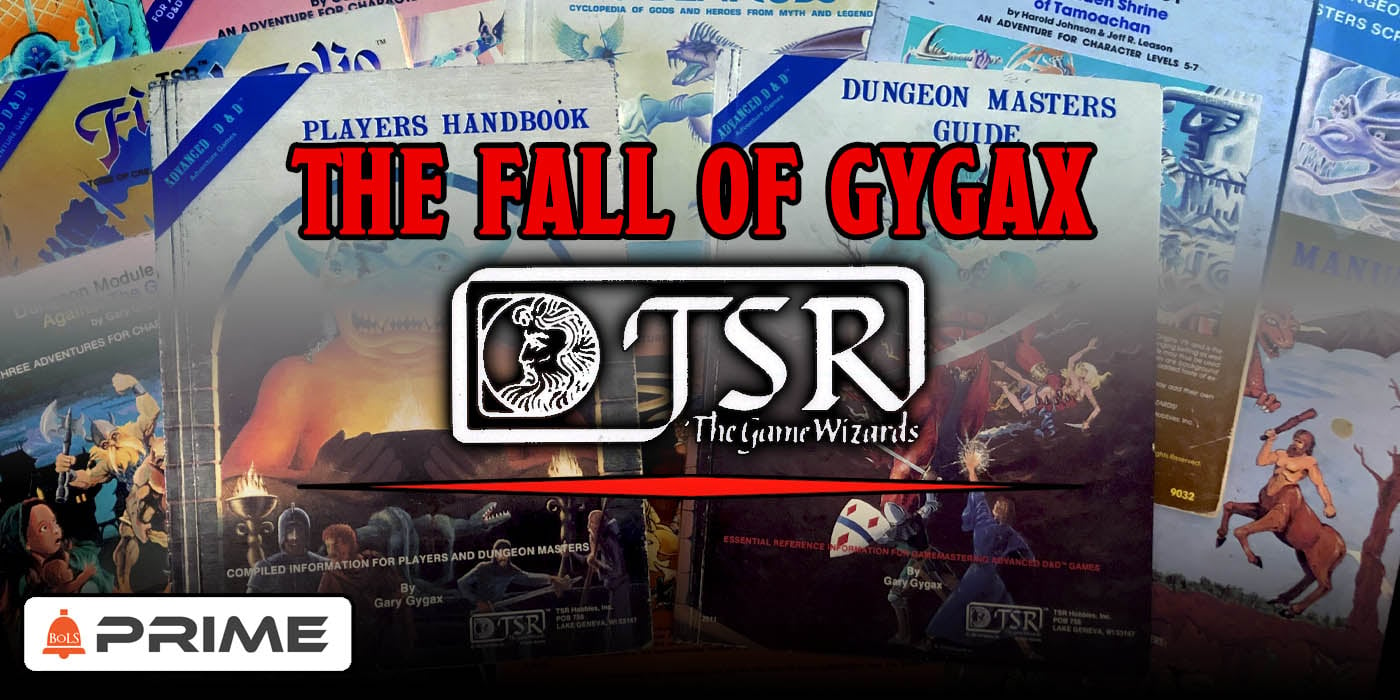
TSR ruled the tabletop roleplaying game industry for almost twenty-five years. But by 1985, TSR was in trouble, and Gary Gygax was on his way out…
From its tumultuous start in the ’70s, to 2019 and beyond, D&D defines the roleplaying game landscape. In its shadow, other games have grown and flourished, but it remains the game that defines the hobby for most people, in or outside of it. But how does the company that made the game with the most players, biggest audience, and widest reach fall apart? Today we’re taking a look at the history of TSR as it went from founder of the industry to fading glory. If you’re curious about the earliest days of TSR, during the heady 1970s when an audience, hungry for D&D and what it represented, first began to flourish, you can check out our earlier article on the Rise of TSR.
Unbridled Enthusiasm
There you’ll read about how the founders of TSR met, and how the company grew from a small operation with just three employees, into a veritable industry powerhouse, complete with its own publications department running multiple magazines, printing innovative RPGs, and of course, at the heart of it all: Dungeons & Dragons and its associated expansions and novels and dice.
By the end of the ’70s, D&D had spread across the world, pushing into the UK, Europe, and Australia. After negotiations with Games Workshop fell apart, another branch of the company, TSR UK was born. And the magazines that TSR produced helped the game’s reach grow, with fans writing into all sorts of publications, like Dragon and later Dungeon with their questions and ideas (for better or worse).
Even non-TSR magazines had a dedicated D&D feature. The White Dwarf, whose 40th anniversary is upon us, is responsible for one of the earliest big fan-contributed expansion to AD&D: the Fiend Folio, which is filled with monsters taken from the suggestions readers sent to the early issues of the White Dwarf. Folks like Charles Stross, who would go on to write the Laundry Files among other works, contributed their best monster ideas, and we got creatures like the Githzerai and Githyanki, the Hook Horror, and at least two varieties of bird people.
Cracks in the Facade
But not all was well at TSR. In the early days of the 80s, the founding partnership of TSR had become full of in-fighting. Gary Gygax, once the head of the company, now only controlled around a 30% stake in the company, with the power resting in the hand of two brothers, Kevin and Brian Blume.
Initially, the relationship worked, but as you’ll see, these three presidents had more to feud over than to relate about. With an imbalance of power, it ends up with the Blumes making decisions and Gygax being bitter about it.
“The fact is, though, that there were three persons on the Board of Directors of the company – Brian Blume, Kevin Blume and me. Similarly, while I was the President and CEO, Brian placed himself in charge of creative affairs, as President of that activity, while Kevin was President of all other operations. This effectively boxed me off into a powerless role. If a ‘President’ under me did something I didn’t like, my only recourse would be to take the matter to the Board of Directors where I would be outvoted two to one.”
“I have spoken earlier of the structure that the Blumes imposed on TSR in 1981. As another example of things before then, late 1979 or early 1980, I issued some instructions. When Brian heard what I had ordered he shouted loudly for all to hear: «I don’t care what Gary said. I own controlling interest in this company and it will be done the way I say!». I should have parted ways with TSR then and there, but I still had a lot of loyalty to the company and the vision upon which it had been created. Anyway, from that point on, I had little control, and in general what I desired be done was ignored or the exact opposite was put in place.”
So bear all that in mind as we head into the ’80s and the fall of Gygax.
Welcome to the 1980s
As the first blush of the ’80s rolled around, along with the completion of the AD&D line, which was a solid platform for new gamers to pick up this game that had been growing rapidly, the Blumes instituted a great deal of change at TSR. In April of 1981, there was a major reorganization at TSR that resulted in at least a dozen employees fired for “having a bad attitude.” Reasons could range from even the smallest scrap of resentment towards the bosses to voicing support for Dave Arneson and his ideas (which is an interesting take to have about one of the co-founders of the game that laid the golden, d20 shaped egg).
Not that goose.
But even amidst all this unrest, TSR was still growing. In 1982, they acquired SPI, an old wargame company that had been looking to strike out in the roleplaying business. Though, as with many things in those days, the way TSR acquired the company reflects some of the shady doings at the time. With TSR loaning SPI a considerable sum of money and then (depending on whose account you believe) forclosing almost immediately on SPI and taking it over, with fancy new properties like James Bond 007 looking promising. Sadly, licensed IPs weren’t the only things SPI had in their possession. TSR also acquired a great deal of SPI’s debt. TSR even went so far as to pay some of it–but in the end, TSR took a hit in acquiring SPI.
As the story goes, in December of 1983, SPI was facing Chapter 7 bankruptcy. At the same time, TSR had its second of many brushes with lawsuits, targeting other companies with cease-and-desist letters, threatening legal action against smaller game companies like Mayfair Games, makers of Role Aids.
But even with the ill will brought about by the lawsuits and perception that TSR had bought SPI only to close its doors, TSR was still growing. 1982 saw the publication of one of the biggest hits for TSR–a new kind of D&D book based on the concepts of Choose Your Own Adventure Books: Endless Quest.
Written by the inimitable Rose Estes, who had a hand in nearly everything at TSR and made sure that the company’s reach spread, the Endless Quest books have an origin story as wild as the books themselves. As the story goes, Estes was out following a traveling circus for a magazine article, when she came across a Choose-Your-Own-Adventure novel and brought it back to TSR saying that D&D needed something like this.
Well, in 1982 I took a leave of absence to travel with friends who were part of a tent circus, I figured that it would make for interesting newspaper articles. I had been with them for only a few weeks when we set up in Decorah, Iowa and went to town to do some laundry. There was a bookcase and books that one could borrow or buy and I picked up one of R.A. Montgomery’s Choose Your Own Adventure books. I realized instantly that the books would be the perfect method of explaining D&D to both adults and kids. It had been my job to try to explain the game to adults, most of whom disapproved of the game without understanding it. So, I cut short my trip and called a friend to come and get me.
When I returned I tried my best to convince the powers that be that TSR should do a Choose Your Own Adventure type of book. But the idea met with little interest despite my many attempts to convince them otherwise. Finally, annoyed that I kept on about the idea I was told that if I thought it was a good idea, I should write it myself.
The thought had never occurred to me. I had worked as a journalist, but had never written or even envisioned writing fiction. But I was so aggravated that I did just that, I went home and wrote the first of what would become the Endless Quest series, “Return to Brookmere.” I wrote it longhand on legal pads.
These books were wildly successful. They lead to an eventual 36-book series that has been revived twice now over the years, including as recently as this year. But Endless Quest wasn’t the only big hit amid the tumultuous growth of the early 1980s. Another big impact would send ripples through the D&D pond: the advent of the isolated, gothic lands of Ravenloft, which is still widely regarded as one of the best adventures of all time. All of this just to give you an idea of the massive amount of popularity D&D was enjoying and the rapidity of their growth.
In 1983, TSR reorganized and split into four separate companies: TSR, Inc. (the main one we still think of as TSR), TSR International, TSR Ventures, and TSR Entertainment, Inc:
On June 24 [1983], TSR released in excess of 40 Employees — including vice president Duke Seifried — and reorganized into four companies. Each company bears the same board of directors (E. Gary Gygax, Kevin Blume, and Brian Blume). TSR, Inc. will manufacture the role-playing game line and other products, and is further divdied into six departments: Games/Toy, Publishing/Crafts, Finance, Manufacturing, Marketing and Human Resources. TSR Entertainment Corporation (name not final) is the TSR liaison with motion pictures and television. TSR Ventures is a research and licensing company. TSR Worldwide Ltd. is the international-sales and development branch.
TSR has suffered some financial setbacks in the first half of 1983. Public relations director Dietur Sturm would not confirm a link between financial problems and the reorganization but said of the financial troubles, “More or less, what you’re looking at is money coming into the company from sales and not focused peoperly. Sales are there as far as the distributors and retailers and stores (are concerned), they have nothing to worry about.
Gygax Departs… for the First Time
And here, Gygax leaves for the first time. Depending on which story you believe, he either exiled himself or the Blumes exiled him to Hollywood, as a part of TSR Entertainment’s founding. And this section is such an interesting branch–it reflects a goal that modern-day WotC is still exploring: media dominance. At the time, TSR Entertainment existed to pitch D&D shows, be they television or movies. I guess it doesn’t matter who owns the company; people still don’t seem to learn the lesson that D&D Movies are just bad news all around. And yet, that was the company’s purpose.
And to a degree, Gygax succeeded, securing a deal with Marvel Comics to create the Dungeons & Dragons cartoon, which premiered in September of 1983 and ran for three seasons:
In other TSR news, a Dungeons and Dragons Saturday Morning Show cartoon series, which has been arranged through the Marvel Comics film division will premier on CBS on September 17. TSR’s negotiations for a possible Marvel superhero role-playing game are not yet complete.
These successes are important because they’re what enable Gygax to take back control (for a while) of TSR. From 1981-1983, the company had been missing sales goals and not growing nearly as well as had been projected. The restructures, the reports of “financial setbacks,” all were a part of it–rumor at the time held that the Blumes were looking to sell TSR.
In those early years, despite D&D’s massive expansion, it still failed to meet goals. TSR had become awash in financial problems, with Gygax claiming that “TSR had accumulated $1.5 million debt that they couldn’t figure out to pay”, which stems from the rapid growth and restructuring and reorganization that the company had gone through in the span of just a few years. Gygax loves to blame the Blumes, but is definitely biased himself. In truth, the company had been struggling to the point where managers were noticing falling sales of D&D, both basic and advanced. Jon Peterson, of Playing at the World, has a good accounting of the events:
By June 1983, it became clear that the business was not growing as expected: TSR would report revenue for that fiscal year of $26.7M, well short of the predicted $75M. April and May revenues especially alarmed the company’s managers. The purchase of Greenfield Needlewomen had failed to deliver its promised returns, so TSR was forced to write off the acquisition—and as a consequence, to post its first loss. In need of liquidity, TSR secured a $4M loan from the American National Bank in Chicago. Negotiating that deal became Kevin Blume’s responsibility, though TSR now entered unfamiliar waters: for such a task, as Kevin put it at the time, “I was the best there was in the company, but I wasn’t the right person.”
Yet for all its worries, TSR kept hiring: 25 employees joined the company in June alone. Drastic measures would be required to align the business with the market. Therefore, on June 24, TSR Hobbies reorganized into four separate companies: TSR Inc., which retained all games, toys, manufacturing, and marketing; TSR Entertainment Corporation, which controlled television and motion picture properties; TSR Ventures, which comprised licensing and research; and TSR Worldwide Ltd. which formed an umbrella corporation for international subsidiaries and sales. As it underwent this reorganization, TSR also began to shed workers, starting with an initial round of 40 cuts; the bank only agreed to its loan on the condition of a sizeable staff reduction.
Kevin Blume presided over TSR, Inc., hopelessly overstaffed and confronted with a contracting market. As such, he oversaw several rounds of acrimonious downsizing, cutting hundreds of employees in groups of thirty or forty at a time. As aggressive as the reductions were, they did not satisfy TSR’s creditors, who insisted on the addition of three outside directors to the board in 1984: James Huber, Robert Kidon, and Wesley Sommers. At the behest of these independents, Kevin Blume “removed himself” from executive duties, as TSR’s spokesman would put it, and Richard Koenings became acting President and CEO of TSR as of December 1984. Koenings implemented punishing salary deferments and wage reductions on the remaining staff effective December 10 in an attempt to balance the company’s teetering budget. In the coming year, sales of Dungeons & Dragons were projected to fall by a further 20%.
Gygax Returns
All of this leads to the rumors that TSR would soon be sold, which “brought Gygax charging back” from Hollywood to take control of TSR. Which he did, with gusto, writing a letter to the company’s Board of Directors–and there’s some dispute on how the Board grew to six members, according to Peterson, they were added due to pressure from the Creditors, but according to Gygax, this is a move by the Blumes in a move to gain legitimacy for TSR by having it join a management association–requesting that the Blumes be removed. Here’s a look at how that all goes down, in Gygax’ own words:
After the reorganization where Brian and Kevin Blume boxed my position as president and CEO into a powerless role, they were evidently not completely satisfied […], the Blumes decided that TSR must join the American Management Association.
Their next step was to expand the Board of Directors to six, bringing in three ‘outside’ directors, all members of the AMA. One was a lawyer from a large Milwaukee law firm. Another was a personnel officer from a Milwaukee area company. The third owned a company that made medical equipment.
Now, owing to Gygax’s very obvious bias, it does seem likely that the board was there as a response to worried creditors, to help soothe any worry that might crop up. Whatever the ultimate reasoning for their being there, the Board listened to Gygax’ proposal, and voted to remove the Blumes from operational duties (though importantly, they remained on as a part of the Board of Directors), and named Gygax the new President and Chief Executive Officer of TSR, Inc., as well as Chairman of the board. As you might expect though, the Blumes did not take this maneuver lying down.
The Meeting of Meetings
At the time, TSR was still in trouble. With creditors worried, and the banks still not loaning them, capital of any kind was scarce. Top that off with the deficits that TSR had incurred and the banks, in the throes of the 1985 financial crisis, would not lend TSR the money to purchase the Blume’s stock. When that option failed, Gygax proposed that he would buy the Blume’s stock:
At the April 16 board meeting, the board informed the Blumes that the bank had blocked the transaction. As a result, the Blumes once again expressed reluctance about signing a severance agreement with TSR. What happened next is a matter of some dispute. During a recess in the meeting, Gygax met with Kevin and Brian Blume privately. Accordingly to the Blumes, they offered their shares to Gygax, who agreed to purchase them personally with his own funds. Gygax later refuted this claim, stating that he merely agreed to help “to find a consortium of individuals willing and able to purchase Blume-held shares at the price discussed” but insisted that “no offer or promise was ever made.” As the discussion happened behind closed doors, it is no simple matter to ascertain the truth either way.
On May 6, Brian and Kevin Blume did execute a severance agreement with TSR. When neither Gygax nor TSR made any further movement to acquire their position, they subsequently issued to TSR a “Notice of Intent to Sell and Offer to Sell” on July 22 which again declared their interest in selling their shares at $500 each, a price Gygax deemed unreasonable. Kevin Blume then sent a mail to TSR on August 25 which stressed that their severance package “was accepted based on E.G. Gygax’s offer to buy the Blume’s stock in TSR, Inc.’s stead.” He concludes by demanding directly, “When can we expect to receive E.G. Gygax’s offer?”
Eventually, the Blumes do find a buyer. Lorraine Williams, who had been brought in months before as Vice President of Administration–as well as her own connections to considerable money. Money which would allow her to purchase the Blume’s shares in TSR. A fact unbeknown to Gygax at the start of the October 22, 1985 Board Meeting. At this meeting, Gygax would finally be ousted–and for all his blustering and attempts to retcon the way things unfolded, here the board of directors asks for his resignation:
Resolved that, in the best interests of the corporation, E. Gary Gygax be terminated as President and Chief Executive Officer and Chairman and that TSR and Mr. Gygax negotiate and seek to enter into an agreement whereby Mr. Gygax would continue to do creative work and the Company continue to utilize his creative talent.
In the wake of this proposal passing, Gygax is divested of his interests in TSR. His dithering and delay around the Blume’s shares fueled his own ouster from the company. And despite an attempt to send an unsolicited cashier’s check to Kevin Blume to purchase his shares of TSR stock–and a year-long legal battle–Gygax would leave the company forever. And with a final letter bemoaning the fact that D&D was about to fall under the control of “outsiders” who “held contempt for gamers”, Gygax departs.
Lorraine Williams takes charge of TSR, and for a time, everything turns around.
AD&D 2nd Edition is released, and a new era dawns for TSR. But it was not meant to last.

